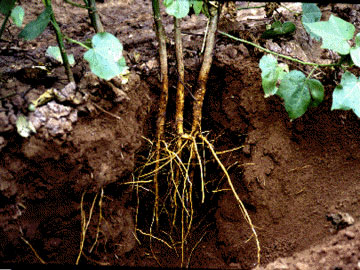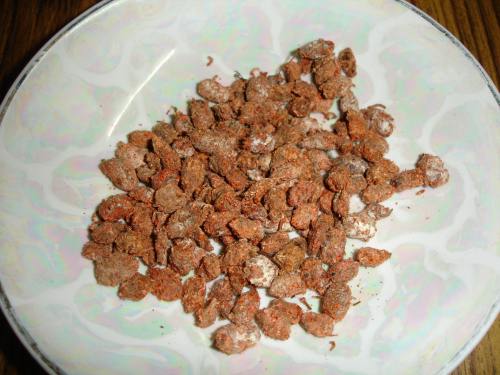|
Alkekengi
''Alkekengi officinarum'', the bladder cherry, Chinese lantern, Japanese-lantern, strawberry groundcherry, winter cherry, alchechengi berry, or Klabuster cherry is a species of flowering plant in the nightshade family Solanaceae. It is a close relative of the new world '' Calliphysalis carpenteri'' (Carpenter's groundcherry) and a somewhat more distant relative to the members of the ''Physalis'' genus. This species is native to the regions covering Southern Europe to South Asia and Northeast Asia. Description It is easily identifiable by the large, bright orange to red papery calyx covering over its fruit, which resembles paper lanterns. It is a perennial herbaceous plant growing to tall, with spirally arranged leaves long and broad. The flowers are white, with a five-lobed corolla across, with an inflated basal calyx which matures into the papery orange fruit covering, long and broad. And it has one variety, ''Alkekengi officinarum'' var. ''franchetii''. Research has shown ... [...More Info...] [...Related Items...] OR: [Wikipedia] [Google] [Baidu] |
Physalis
''Physalis'' (, , , , from 'bladder') is a genus of approximately 75 to 90 flowering plants in the Solanum, nightshade family (Solanaceae), which are native to the Americas and Australasia. At least 46 species are endemism, endemic to Mexico. Cultivated and weedy species have been introduced worldwide. A defining feature of ''Physalis'' is a large, papery husk derived from the sepal, calyx, which partly or fully encloses the fruit. Many species bear edible fruit, and some species are cultivated. The typical ''Physalis'' fruit is similar to a firm tomato in texture, and like a sweet, tangy grape in flavor. Some species, such as the Physalis peruviana, Cape gooseberry and tomatillo, have been bred into many cultivars with varying flavors, from tart to sweet to savory. Nations including Colombia, India, and Mexico have a significant economic trade in ''Physalis'' fruit. The fruits of many species are generically referred to as physalis, groundcherries, husk tomatoes, husk cherries ... [...More Info...] [...Related Items...] OR: [Wikipedia] [Google] [Baidu] |
Physalis Alkekengi 005
''Physalis'' (, , , , from 'bladder') is a genus of approximately 75 to 90 flowering plants in the nightshade family (Solanaceae), which are native to the Americas and Australasia. At least 46 species are endemic to Mexico. Cultivated and weedy species have been introduced worldwide. A defining feature of ''Physalis'' is a large, papery husk derived from the calyx, which partly or fully encloses the fruit. Many species bear edible fruit, and some species are cultivated. The typical ''Physalis'' fruit is similar to a firm tomato in texture, and like a sweet, tangy grape in flavor. Some species, such as the Cape gooseberry and tomatillo, have been bred into many cultivars with varying flavors, from tart to sweet to savory. Nations including Colombia, India, and Mexico have a significant economic trade in ''Physalis'' fruit. The fruits of many species are generically referred to as physalis, groundcherries, husk tomatoes, husk cherries, poha berries, and golden berries. Descrip ... [...More Info...] [...Related Items...] OR: [Wikipedia] [Google] [Baidu] |
Calliphysalis Carpenteri
''Calliphysalis'' is a monotypic genus of perennial plants in the Physaleae tribe of the nightshade family Solanaceae.Per Axel Rydberg. 1896. The North American species of ''Physalis'' and related genera. '' Memoirs of the Torrey Botanical Club'' 4: 297-374; 330, citing Riddell, John L. 1853. New and hitherto unpublished plants of the Southwest, mostly indigenous in Louisiana. ''New Orleans Medical and Surgical Journal'' 9:609-618. ''Calliphysalis carpenteri'', known as Carpenter's groundcherry is the only recognized member of the genus. ''C. carpenteri'' is native to sandy soils on the coastal plain regions of south-eastern North America from northern Florida to Louisiana and Arkansas, it was first described from specimens collected in West Feliciana Parish, Louisiana. Its species name honors the botanical contributions of early Louisiana naturalist William Marbury Carpenter (1811-1848). Taxonomy Prior to 2012, this species was known as ''Physalis carpenteri''. At that time it ... [...More Info...] [...Related Items...] OR: [Wikipedia] [Google] [Baidu] |
Award Of Garden Merit
The Award of Garden Merit (AGM) is a long-established award for plants by the British Royal Horticultural Society (RHS). It is based on assessment of the plants' performance under UK growing conditions. It includes the full range of cultivated plants, from annuals, biennials and perennials to shrubs and trees. It covers plants grown for specific purposes - such as vegetable crops, fruit, hedging, topiary, groundcover, summer bedding, houseplants, etc. It tests characteristics such as robustness, hardiness, longevity, flowering/fruiting abundance and quality, usefulness, and ease of cultivation. It pays particular attention to a plant's ability to survive and thrive in challenging conditions such as wind and frost. The AGM trophy symbol is widely used in gardening literature as a sign of exceptional quality, and is recognised as such by writers, horticulturalists, nurseries, and everybody in the UK who practises gardening. History The Award of Garden Merit is a mark of quality aw ... [...More Info...] [...Related Items...] OR: [Wikipedia] [Google] [Baidu] |
Invasive Species
An invasive species is an introduced species that harms its new environment. Invasive species adversely affect habitats and bioregions, causing ecological, environmental, and/or economic damage. The term can also be used for native species that become harmful to their native environment after human alterations to its food web. Since the 20th century, invasive species have become serious economic, social, and environmental threats worldwide. Invasion of long-established ecosystems by organisms is a natural phenomenon, but human-facilitated introductions have greatly increased the rate, scale, and geographic range of invasion. For millennia, humans have served as both accidental and deliberate dispersal agents, beginning with their earliest migrations, accelerating in the Age of Discovery, and accelerating again with the spread of international trade. Notable invasive plant species include the kudzu vine, giant hogweed (''Heracleum mantegazzianum''), Japanese knotw ... [...More Info...] [...Related Items...] OR: [Wikipedia] [Google] [Baidu] |
Root
In vascular plants, the roots are the plant organ, organs of a plant that are modified to provide anchorage for the plant and take in water and nutrients into the plant body, which allows plants to grow taller and faster. They are most often below the surface of the soil, but roots can also be aerial root, aerial or aerating, that is, growing up above the ground or especially above water. Function The major functions of roots are absorption of water, plant nutrition and anchoring of the plant body to the ground. Types of Roots (major rooting system) Plants exhibit two main root system types: ''taproot'' and ''fibrous'', with variations like adventitious, aerial, and buttress roots, each serving specific functions. Taproot System Characterized by a single, main root growing vertically downward, with smaller lateral roots branching off. Examples. Dandelions, carrots, and many dicot plants. Fibrous RootSystem Consists of a network of thin, branching roots that spread out from ... [...More Info...] [...Related Items...] OR: [Wikipedia] [Google] [Baidu] |
Escaped Plant
An escaped plant is a Cultigen, cultivated plant that has escaped from agriculture, forestry or garden cultivation and has become naturalized in the wild. Usually not native to an area, escaped plants may become Invasive species, invasive. Therefore, escaped plants are the subject of research in invasion biology.Mulvaney M (2001) The effect of introduction pressure on the naturalisation of ornamental woody plants in south-eastern Australia. In 'Weed Risk Assessment'. (Eds RH Groves, FD Panetta, JG Virtue). (CSIRO Publishing: Collingwood) Some ornamental plants have characteristics which allow them to escape cultivation and become weedy in alien ecosystems with far-reaching ecological and economic consequences. Escaped garden plants may be called garden escapes or escaped ornamentals. Sometimes, their origins can even be traced back to botanical gardens. All escaped plants belong to the so-called Hemerochory, hemerochoric plants. This term is used across the board for plants that ... [...More Info...] [...Related Items...] OR: [Wikipedia] [Google] [Baidu] |
Royal Horticultural Society
The Royal Horticultural Society (RHS), founded in 1804 as the Horticultural Society of London, is the UK's leading gardening charity. The RHS promotes horticulture through its five gardens at Wisley (Surrey), Hyde Hall (Essex), Harlow Carr (North Yorkshire), Rosemoor (Devon) and Bridgewater (Greater Manchester); flower shows including the Chelsea Flower Show, Hampton Court Palace Flower Show, Tatton Park Flower Show and Cardiff Flower Show; community gardening schemes; Britain in Bloom and a vast educational programme. It also supports training for professional and amateur gardeners. the president was Keith Weed and the director general was Clare Matterson CBE. History Founders The creation of a British horticultural society was suggested by John Wedgwood (son of Josiah Wedgwood) in 1800. His aims were fairly modest: he wanted to hold regular meetings, allowing the society's members the opportunity to present papers on their horticultural activities and discov ... [...More Info...] [...Related Items...] OR: [Wikipedia] [Google] [Baidu] |
Chinese Medicine
Traditional Chinese medicine (TCM) is an alternative medical practice drawn from traditional medicine in China. A large share of its claims are pseudoscientific, with the majority of treatments having no robust evidence of effectiveness or logical mechanism of action. Some TCM ingredients are known to be toxic and cause disease, including cancer. Medicine in traditional China encompassed a range of sometimes competing health and healing practices, folk beliefs, literati theory and Confucian philosophy, herbal remedies, food, diet, exercise, medical specializations, and schools of thought. TCM as it exists today has been described as a largely 20th century invention. In the early twentieth century, Chinese cultural and political modernizers worked to eliminate traditional practices as backward and unscientific. Traditional practitioners then selected elements of philosophy and practice and organized them into what they called "Chinese medicine". In the 1950s, the Chinese ... [...More Info...] [...Related Items...] OR: [Wikipedia] [Google] [Baidu] |
John Gerard
John Gerard (also John Gerarde, 1545–1612) was an English herbalist with a large garden in Holborn, now part of London. His 1,484-page illustrated ''Herball, or Generall Historie of Plantes'', first published in 1597, became a popular gardening and herbal book in English in the 17th century. Except for some added plants from his own garden and from North America, Gerard's ''Herbal'' is largely a plagiarised English translation of Rembert Dodoens's 1554 herbal, itself highly popular in Dutch, Latin, French and other English translations. Gerard's ''Herball'' drawings of plants and the printer's woodcuts are mainly derived from Continental European sources, but there is an original title page with a copperplate engraving by William Rogers. Two decades after Gerard's death, the book was corrected and expanded to about 1,700 pages. Life Early life and education Gerard was born at Nantwich, Cheshire, towards the end of 1545, receiving his only schooling at nearby Willaston, ... [...More Info...] [...Related Items...] OR: [Wikipedia] [Google] [Baidu] |
Unani
Unani or Yunani medicine (Urdu: ''tibb yūnānī'') is Perso-Arabic traditional medicine as practiced in Muslim culture in South Asia and modern day Central Asia. Unani medicine is pseudoscientific. The term '' Yūnānī'' means 'Greek', referring to the fact that the Perso-Arabic system of medicine was based on the teachings of the Greek physicians Hippocrates and Galen. The Hellenistic origin of Unani medicine is still visible in its being based on the classical four humours: phlegm (), blood (''dam''), yellow bile (''ṣafrā'') and black bile (''saudā), but it has also been influenced by Indian and Chinese traditional systems. History Arab and Persian elaborations upon the Greek system of medicine by figures like Ibn Sina and al-Razi influenced the early development of Unani. Unani medicine interacted with Indian Buddhist medicine at the time of Alexander's invasion of India. There was a great exchange of knowledge at that time which is visible from the simil ... [...More Info...] [...Related Items...] OR: [Wikipedia] [Google] [Baidu] |






